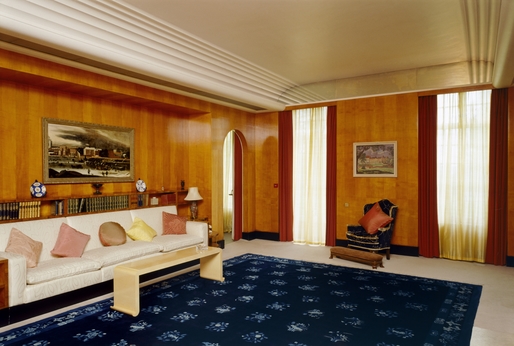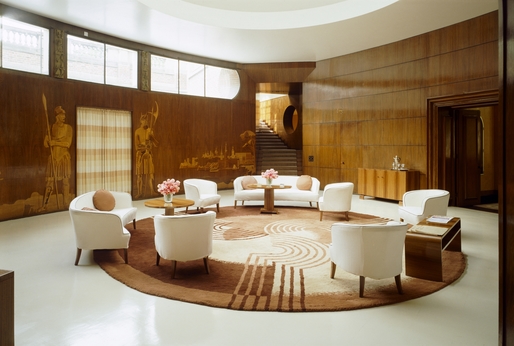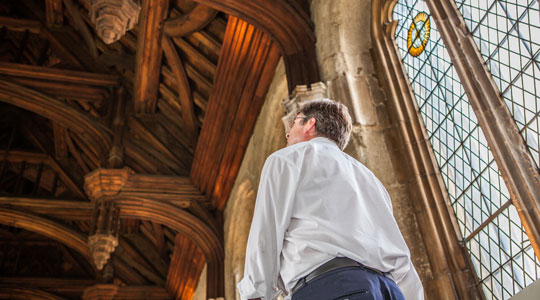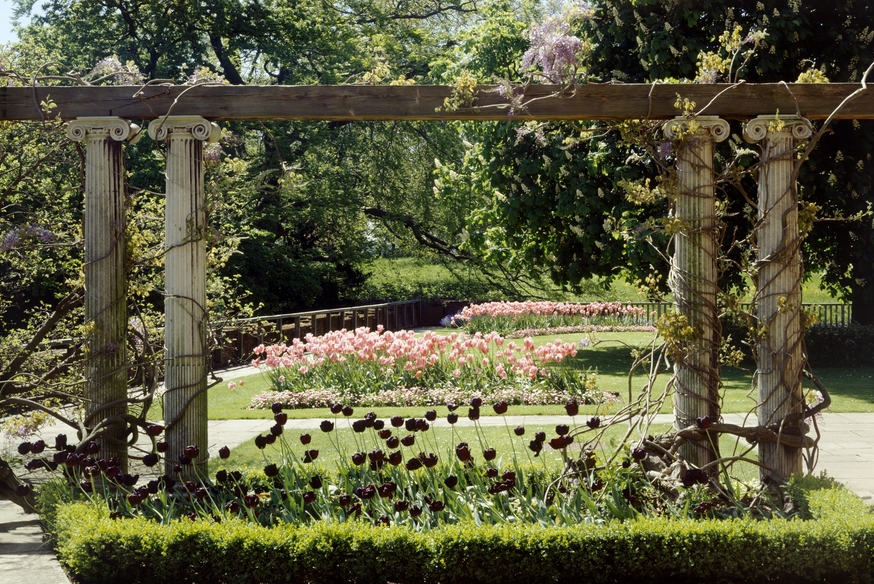
Created for millionaires Stephen and Virginia Courtauld, Eltham Palace is part showpiece of Art Deco design and 1930s cutting-edge technology, and part medieval royal palace. Bring your family and make yourself at home, try on clothes, play games and listen to music, as a guest of the Courtaulds. Explore the 19 acres of award-winning gardens.
Eltham is a unique marriage between a Tudor palace and a 1930s millionaire’s mansion. From the 14th to the 16th century it was an important royal palace, where monarchs often stayed and hunted in the surrounding parks. After centuries of neglect, Eltham was leased to Stephen and Virginia Courtauld in 1933, who built an up-to-the-minute house here that incorporated the great hall. The result was a masterpiece of 20th-century design.

Discover new rooms at Eltham Palace now open to the public for the very first time. Explore the map room where the globetrotting Stephen and Virginia planned their exotic world travels.
Step into a reconstruction of Virginia’s walk-in wardrobe to see beautiful period dresses, hats and accessories, and try on some vintage-inspired replicas yourself.
Go down to the basement with its billiard room and original mural, photographic darkroom and wartime basement bunker. This provided a level of comfort during the Blitz that few ordinary citizens, taking refuge in tube stations or Anderson shelters, could have imagined.


Admire the stunning domed entrance hall at Eltham Palace, where prestigious guests gathered for glamorous cocktail parties.
Socialites and politicians, royals and artists all enjoyed hospitality here. This eye-catching room is a mix of Art Deco and cutting-edge Swedish design. Saved from decline by the Courtaulds’, their lavish home is one of the finest examples of Art Deco architecture and design surviving in Britain today.
Explore some of the collection highlights that you can see at Eltham Palace. The marvellous panelled dining room and luxurious golden bathroom are just two of the other highlights you can enjoy.
Take just a few steps and travel back in time from Art Deco modernity to a medieval masterpiece. Gaze out from the minstrels’ gallery across the magnificent great hall, and admire the glorious hammer-beam roof built for Edward IV five hundred years ago.
First recorded in the Domesday book, Eltham estate was presented to King Edward II in 1305. It developed into one of the most favoured royal palace with 1,000 acres of deer park on its doorstep.
Henry VIII spent many childhood years here, but his daughter Elizabeth I preferred the location at Greenwich, and Eltham Palace slowly fell into decline.


Explore 19 acres of beautiful gardens with new interpretation throughout. Admire the herbaceous border designed by award-winning garden designer Isabelle Van Groeningen.
Take time to wander around the Rock Garden with its series of pools and cascades running down to the moat. Cross the moat on London’s oldest working bridge, and smell the roses in the sunken rose garden.
Virginia had a passion for roses, and even had a red rose named after her. Stephen was also a keen gardener and won several Royal Horticultural prizes for the orchids he grew in the glasshouses at Eltham. Find out what you can enjoy in the garden whichever season you visit.


Days |
Timings |
|---|---|
Monday |
10:00 – 17:00 |
Tuesday |
10:00 – 17:00 |
Wednesday |
10:00 – 17:00 |
Thursday |
10:00 – 17:00 |
Friday |
Closed |
Saturday |
10:00 – 17:00 |
Sunday |
10:00 – 17:00 |
